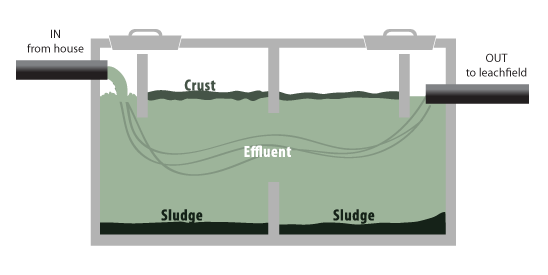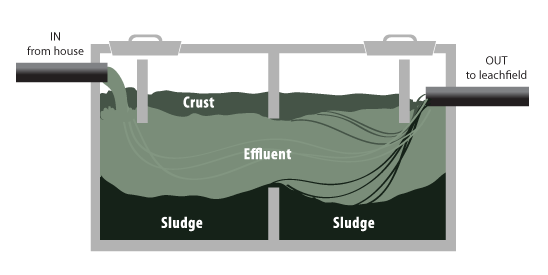|
If you are like most people, you know very little about your septic tank system. This is understandable. In urban and suburban areas there are sewers to carry household waste to municipal wastewater treatment facilities. In more rural areas, however, septic tank systems provide the functions of both sewers and treatment facilities.
All household waste is disposed of through the septic system. The proper operation of the septic system is essential to public and private health, to property values, and to the environment. Without proper maintenance your septic system could become a huge aggravation, public nuisance, health hazard, and financial burden.
Click to download: Home Owners Guide to Septic Systems (EPA Brochure)
The illustration below depicts a healthy septic tank.

Household waste disposed through sinks, garbage disposals, tubs, toilets, and the like enter the septic tank through a drain line that is protected by a baffle. Baffles may also be located at the center of the tank and at the "OUT" drain line. Baffles keep elements from free floating through the tank and into the leach field.
Lighter elements such as soap and paper will float to the top (crust). Heavier elements will collect on the bottom (sludge). The result of the separation of elements is the effluent. The effluent exits the septic tank through a drain line at the opposite end of the tank and into the leach field.
Over time the crust and sludge will accumulate into a thicker mass. This thicker mass can work its way under the baffles and cause obstructions in the lines both coming in and out of the tank. The crust and sludge will also begin to contaminate the leach field.
Sludge is damaging to leach fields and will plug the leach field system causing it to fail. Sludge is the number one reason tanks need to be pumped. The crust can cause system back-up by plugging the in and out drain lines.

|

